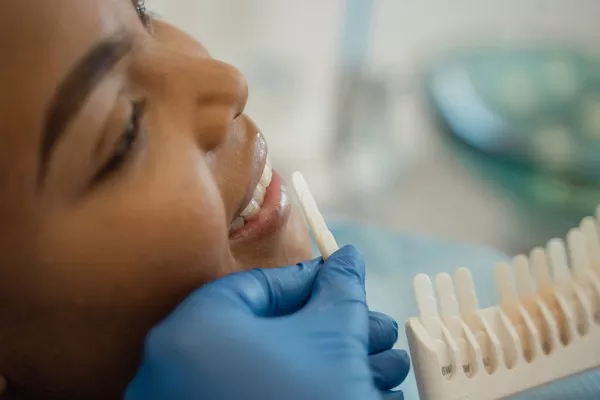Gingivitis, a common form of gum disease, affects millions of people worldwide. It is a mild yet treatable condition that, if left untreated, can progress to more severe periodontal diseases. Recognizing the early signs and symptoms of gingivitis is crucial for timely intervention and prevention of complications. This article aims to provide a comprehensive overview of the symptoms associated with gingivitis, empowering readers to take proactive steps towards maintaining optimal oral health.
Understanding Gingivitis
Before delving into the symptoms, it’s important to understand what gingivitis is. Gingivitis is inflammation of the gums caused by plaque buildup along the gumline. Plaque, a sticky film of bacteria, releases toxins that irritate the gums, leading to redness, swelling, and tenderness. Poor oral hygiene, hormonal changes, certain medications, smoking, and systemic diseases can increase the risk of developing gingivitis.
Common Symptoms of Gingivitis
1 .Redness and Swelling:
One of the earliest signs of gingivitis is redness and swelling of the gums. Healthy gums should appear pink and firm; however, when affected by gingivitis, the gums become inflamed and may exhibit a shiny or puffy appearance.
2. Bleeding Gums:
Gingivitis often causes gums to bleed during brushing or flossing. The bleeding usually occurs due to increased sensitivity and weakened gum tissues caused by inflammation. Individuals with gingivitis may notice blood on their toothbrush or dental floss.
3 .Bad Breath (Halitosis):
Persistent bad breath, also known as halitosis, can be an indication of gingivitis. The bacteria present in plaque release volatile sulfur compounds that contribute to foul-smelling breath. Regular mouthwash or mints can mask the odor temporarily, but addressing the underlying gum disease is necessary for a long-term solution.
4.Gum Recession:
As gingivitis progresses, it can lead to gum recession. The gums may start pulling away from the teeth, exposing the tooth roots. This can cause tooth sensitivity and make the teeth appear longer than usual.
5. Tender or Sore Gums:
Gingivitis often causes discomfort or tenderness in the gums. Affected individuals may experience pain while eating, drinking, or when pressure is applied to the gums. This soreness is typically localized around the affected areas of the mouth.
6.Changes in Gum Texture:
Healthy gums should have a smooth texture, but with gingivitis, the gums may feel soft, spongy, or swollen. Running your tongue along the gumline may reveal irregularities or indentations caused by inflammation.
7.Formation of Gum Pockets:
In advanced cases of gingivitis, deep pockets may form between the gums and teeth. These pockets provide an ideal space for bacteria to thrive, leading to further gum and bone damage. Dentists use special instruments to measure these pockets during a dental examination.
8.Changes in Bite Alignment:
Severe or chronic gum inflammation due to untreated gingivitis can affect the alignment of teeth. As the gums recede and bone loss occurs, teeth may shift, resulting in a noticeable change in the bite pattern. This can lead to difficulties in chewing and speaking.
Seeking Professional Help
If any of the aforementioned symptoms are experienced, it is crucial to seek professional dental care promptly. A dentist can conduct a thorough examination, evaluate the severity of gingivitis, and develop an appropriate treatment plan. Treatment options typically involve improved oral hygiene practices, professional cleaning (scaling and root planing), antimicrobial mouth rinses, and, in severe cases, surgical intervention.
Does hydrogen peroxide fight gingivitis?
Hydrogen peroxide can be used as a mouthwash to help fight gingivitis, but it should be used with caution and under the guidance of a dental professional. Hydrogen peroxide has antimicrobial properties and can help reduce the number of bacteria in the mouth, which is beneficial for gum health.
However, it’s important to note that using hydrogen peroxide in its full strength or in high concentrations can be harmful to the soft tissues in the mouth. It can cause irritation, burning sensations, and may even damage the delicate gum tissues.
If you’re considering using hydrogen peroxide as a mouthwash for gingivitis, it’s advisable to dilute it with water to reduce its concentration. A commonly recommended ratio is one part hydrogen peroxide to two parts water. Additionally, it’s best to consult with your dentist before incorporating hydrogen peroxide into your oral hygiene routine. They can provide personalized advice based on your specific oral health needs and recommend the most suitable treatment options for gingivitis.
Conclusion
Gingivitis is a common and preventable gum disease that can lead to more serious oral health complications if left untreated. Recognizing the early signs and symptoms of gingivitis is vital for timely intervention and successful treatment. Redness, swelling, bleeding gums, bad breath, gum recession, tender gums, changes in gum texture, formation of gum pockets, and changes in bite alignment are all indicators of gingivitis. By prioritizing good oral hygiene practices and seeking professional dental care, individuals can effectively manage this condition and maintain optimal oral health.
Related Topics:































